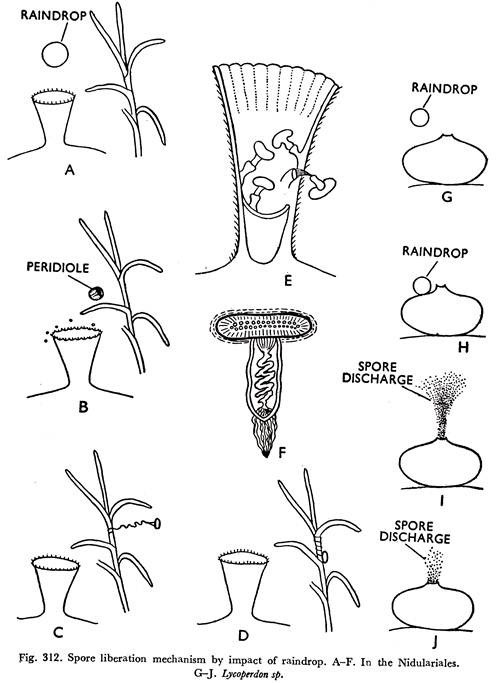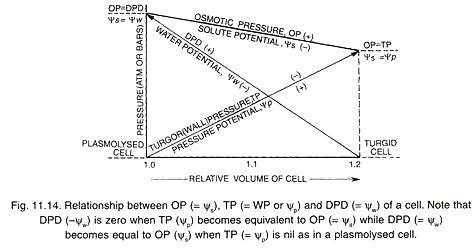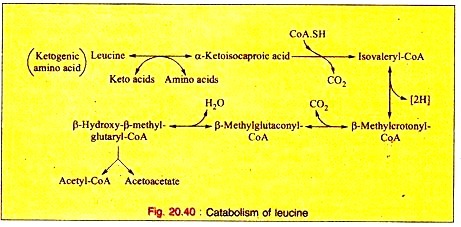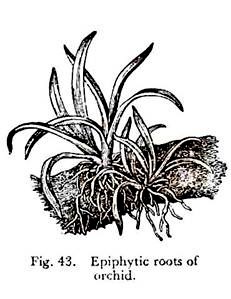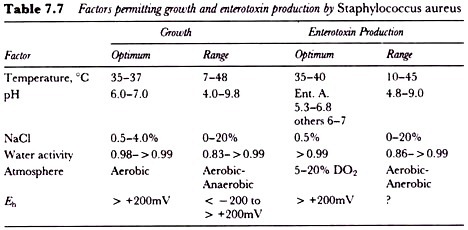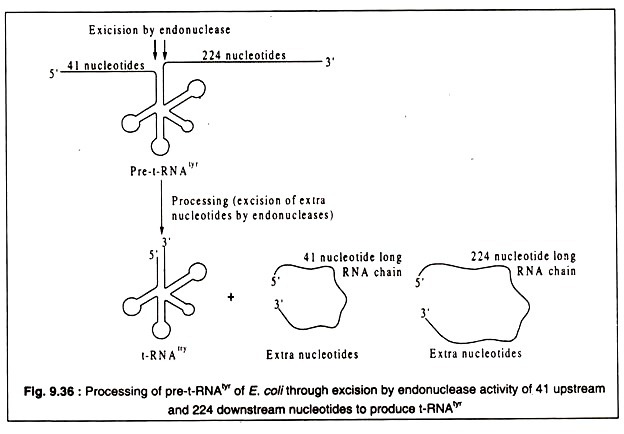In this article, we propose to discuss the three groups of fruit. They are: (1) Simple Fruits (2) Aggregate Fruits and (3) Multiple or Composite Fruits.
The stimulus of fertilization not only develops ovules into seeds but also brings about other changes in the flower and even in the inflorescence.
Usually, all the parts of the flower except the ovary wither away. The ovary begins to enlarge simultaneously with the development of the seed and ultimately becomes the fruit. These changes usually involve a copious development of succulent parenchyma within the ovary.
The contents of these parenchyma cells also change. They become charged with vegetable acids, sugars and often different flavoring matters. These changes may also be associated with structural changes within the ovary, viz., a multilocular and multiovular ovary may change into a unilocular and one-seeded one by the dissolution of some partition walls and non-development of some ovules.
On the other hand, a unilocular ovary may become multilocular by the development of false partition walls. If any other part of the inflorescence is incorporated within the fruit that also is enlarged along with the ovary. When ripe, some fruits remain fleshy and pulpy while others dry up becoming papery or stony. The biological need of the fruit is in the protection of the seed forming a case or a vessel round it.
This is the main point where the Angiosperms (angeion=case or vessel) differ from the naked seeded Gymnosperms (gymnos= naked). The second importance of the fruit is in the dispersal of seeds. If a fruit is valued by other animals, naturally it will be carried by them and the seed will get more easily distributed.
The fruit is usually developed by the stimulus of fertilization but cases are know where a fruit may be formed without fertilization. This is called parthenocarpy. Sometimes, the stimulus of pollination (without fertilization) may be enough to cause from formation and sometimes parthenocarpy may be induced by hormones, etc. Parthenocarpic fruits are, necessarily, seedless.
Since seedless fruits are in great demand, parthenocarpy is of great practical value. World’s best varieties of fruits like bananas, pineapples, grapes, etc., are seedless. Horticulturists are always trying to induce parthenocarpy in more and more varieties of fruits.
A true fruit is one which is developed out of a single ovary of a single flower and in the development of which no other part outside the ovary has taken a share. A fruit is spurious or false (pseudocarp) when the contrary takes place. A large number of fruits are spurious, in this sense. Thus, all aggregate and multiple fruits (described later) are false. Fruits resulting from inferior ovaries are false as the wall of such an ovary has some thalamus tissue fused with it.
Fruits of apple and pear (Fig. 453) are false as the edible part is mainly fleshy thalamus. Brinjal is false as it has a persistent calyx and Dillenia (Fig. 433) fruits are false as the edible sour, fleshy sepals form the bulk of the fruit. Similarly, the persistent calyx makes the Physalis (Fig. 324) fruit false.
A fruit has got a wall or pericarp which was the wall of the ovary. When well developed, this shows three layers—an outer epicarp, a middle mesocarp and an inner endocarp. These are usually more evident in the simple fleshy fruits.
Fruits are usually classified into three groups—simple, aggregate and multiple.
Contents
Group # I. Simple Fruits:
When a single fruit develops from a single ovary of a single flower it is called a simple fruit. It is immaterial whether the ovary belongs to a monocarpellary simple gynoecium or to a polycarpellary syncarpous gynoecium. Such fruits, again may be dehiscent or indehiscent.
A. Dehiscent Fruits:
Dehiscent fruits burst automatically on ripening and discharge their seeds. Such fruits generally become dry at maturity. The dehiscence may be of different types. If on dehiscence the fruit splits up into pieces or valves, the dehiscence is called valvular.
If each broken piece encloses within it one or more seeds then the dehiscence is schizocarpic. Besides these types, a fruit may dehisce transversely or by development of pores. As most types of dehiscence occur among capsules these are discussed again under that type of fruit.
Dehiscent fruits may be:
1. Legume or pod:
This is a characteristic of the Leguminosae family showing a superior monocarpellary one-chambered fruit. The fruit splits along both the sutures. Numerous examples may be found among peas, beans, pulses, etc. (Fig. 434). The lomentum is a variation of the legume but since it is frequently schizocarpic it is considered under that group of fruits.
2. Follicle:
The follicle resembles the legume in developing from a superior monocarpellary ovary but the fruit dehisces along one suture (usually the ventral) only. There is no common example of follicle among simple fruits. Calotropis (Fig. 435) of Asclepiadaceae shows a paired follicle which is actually an aggregate fruit from a bicarpellary ovary. Follicles are discussed under aggregate fruits (p. 199).
3. Siliqua:
This is developed from a bicarpellary superior ovary which is one- chambered but appears two-chambered because of the development of a false partition wall called replum. The dehiscence is along both the sutures from base upwards while the seeds remain attached to the replum. This is a characteristic of the family Cruciferae (Fig. 436).
Silicula is a variation of the siliqua which contains fewer seeds and is much shorter (as broad as long) and flattened. This is seen in Capsella bursa-pastoris (Fig. 437) and a few other plants also belonging to the family Cruciferae.
4. Capsule:
This develops from a superior syncarpous ovary and dehisces by valves. There may be capsules from inferior ovaries as well (e.g., Iris of Iridaceae and Canna of Cannaceae) but these are sometimes given a separate name, diplotegia.
Capsule is, more commonly, a common name for all dehiscent syncarpous fruits with three or more carpels and examples (Fig. 438) are numerous.
The various types of capsules show different types of dehiscence. Usually, the dehiscence is valvular.
Types of dehiscence (Fig. 439) met with are:
(1) Loculicidal—when each loculus splits along the middle of its back (i.e., dorsal suture) as in the families Malvaceae (cotton, lady’s finger, etc.) and Acanthaceae (Andrographis, Adhatoda, etc.).
(2) Septicidal—when the splitting takes place along the septa thus separating each loculus as in linseed and castor. (These fruits actually show the schizocarpic type of dehiscence so that they are better considered under schizocarpic fruits).
(3) Septifragal—when dehiscence is loculicidal or septicidal but the valves fall off leaving the seeds attached to the central azis as in Datuta.
(4) Circumscissile—when the dehiscence is transverse so that the top comes off as a lid as if exposing a box of seeds. This type of fruits is given a special name, pyxis (Fig. 439D), and may be seen in cock’s comb (Celosia cristata), Amaranthus gangeticus and other plants of Amaranthaceae.
(5) Porous—when dehiscence gives rise to a number of pores on the top of the ripe ovary through which granular seeds are liberated by censer mechanism (explained in Chapter XIII) as seen in the poppies (Papaver—Fig. 439E).
5. Schizocarps:
This is a type of fruits which may be considered intermediate between dehiscent and indehiscent. The fruit breaks up into a number of indehiscent bits called mericarps each of which encloses one or more seeds which latter are liberated only on the rotting of the pericarp.
Several types of such fruits are distinguished:
(a) Lomentum:
This is a variation of legume. The fruit (Fig. 440) is constricted between the seeds and usually breaks up into bits containing one or more seeds. This is seen specially in the Mimoseae subfamily of Leguminosae as in Acacia, Mimosa, etc. The large lomentums (3 ft. or more long) of Entada gigas break in the forests with the sound of large crackers.
(b) Cremocarp:
This is the two-seeded fruit (Fig. 441) developed from the inferior bicarpellary ovary of Umbelliferae. The two mericarps split along the carpophore (prolongation of thalamus) to which they (each enclosing a seed} are attached.
(c) Samara:
This is a type of two or more chambered winged fruit developed out of a syncarpous ovary (Figs. 442 & 466). The wings are developed from the pericarp and the fruit breaks up into component parts—each part enclosing a seed. Examples are found in maple (Acer), Dioscorea, Hiptage bengalhensis, etc.
Fruits of Shorea (Fig. 443) and some other members of Dipterocarpaceae are also winged but here the wings are persistent sepals and such a fruit is termed samaroid.
(d) Regma:
These are formed out of polycarpellary pistils and break up into as many component parts (called cocci) as there are carpels.
Castor (Fig. 444A) dehisces into three cocci while the fifteen carpels of Hura crepitans (Fig. 444B) are seen to burst away from one another with great force. The regma of Geranium (Fig. 470B) breaks into five cocci as it is formed of five carpels.
(e) Carcerule:
This is the fruit developed by the superior bicarpellary pistil of Labiatae (Fig. 445) which is falsely four-chambered and develops a gynobasic style. The four chambers separate into four indehiscent parts enclosing one seed each.
B. Indehiscent Fruits:
While dehiscent fruits are all dry, indehiscent fruits may be dry as well as fleshy. Indehiscent fruits do not split open at maturity, the seeds being liberated only by the decomposition of the pericarp or by its accidental destruction.
(A) Dry Indehiscent Fruits:
These present a dry pericarp at maturity and may be:
1. Caryopsis:
The small one-seeded fruit of Gramineae developing from a superior monocarpellary ovary represents this type. The pericarp is fused with the seed coat as seen in the cereals.
2. Achene:
This is similar lo caryopsis in being one seeded and superior but pericarp and seed coat are free from one another. Achenes may be seen in Mirabilis jalapa, etc., but more commonly they are found forming aggregate fruits described on page 199.
3. Cypsela:
This is a one-chambered and one-seeded fruit but developed from a bicarpellary, inferior ovary as seen in the Compositae. Pericarp is free from seed coat.
4. Nut:
This is a one-chambered, one-seeded fruit developed from a superior polycarpellary ovary having a hard and woody pericarp as in oak (Quercus—Fig. 446A).
Cashew-nut (Anacardium Occident ale—Fig. 446B) is a nut on a fleshy peduncle. Litchi (Lichi chinensis — Fig. 430) also is considered as a nut with a leathery fused epimesocarp, a papery endocarp and a fleshy aril which is not a normal component of a fruit.
(B) Fleshy Fruits:
Fleshy fruits usually remain succulent and juicy even when fully mature. These include:
1. Drupe:
This is normally a one-seeded fruit with a skinny epicarp, a fibrous and usually juicy mesocarp and a stony hard endocarp. Drupes are called ‘stone fruits’ because of the stony hard endocarp. Herein are included mango (Fig. 447A), plum (Primus domestica), peach (Prunus persica), apricot (Prunus armeniaca), Indian plum (Zizyphus mauritiana— Fig. 447B), etc.
Sometimes there may be more than one seed in a drupe but, in that case, every seed has got a separate endocarp round it as seen in palmyra palm (Borassus flabellifer—Fig. 447C).
Some fruits included within drupes may have the mesocarp dry and fibrous as in coconut (Cocos nucifera) or dry and tough as in almond (Prunus dulcis). Betel-nut may also be considered as a fibrous drupe like coconut although its endocarp is not so hard.
The walnut (fuglans regia—Fig. 447D) also is a drupe from a syncarpous ovary but containing a single seed. Its thin epicarp and mesocarp peel off during ripening so that only the strong endocarp is seen in the market walnut. Ingrowths from the endocarp pass in between the cotyledons covered by a seed-coat giving them a ruminated appearance.
2. Berry or Bacca:
This term is usually applied to any fleshy fruit in which there is no hard part excepting the seeds. One or the other of epicarp, mesocarp and endocarp may sometimes be differentiated or they may form a pulp in which the seeds are embedded.
The seeds at first remain attached to the placenta but, later on, become detached and embedded in the pulp. Tomato, brinjal, papaw, banana, guava are common examples of berry.
The false inferior fruits included here, specially guava, Includes some thalamus tissue in the outer pulp. In these fruits the epicarp is often distinguishable while the mesocarp and endocarp form a common pulp embedding the hard seeds (Fig. 448).
The fruit of date (Phoenix sylvestris) is sometimes considered as a one-seeded berry in which the endocarp is thin and papery. But, the endocarp is so distinct in this case that it is not wrong to consider date as a variety of drupe in which the endocarp has become papery instead of stony.
There are a number of fruits of the baccate or berry type which show some variations from the normal type:
(a) Pepo:
This is an inferior one-celled or spuriously three-or more-celled, many-seeded fruit as seen in the Cucurbitaceae (Fig. 449). The epicarp forms a tough rind and the seeds are firmly attached to the placenta.
(b) Hesperidium:
This is superior and many-chambered, developing from syncarpous ovary with axile placentation. The endocarp projects inwards forming distinct and sometimes separable chambers while the epicarp and mesocarp are fused together forming the skin.
The juicy, unicellular hairs are outgrowths from the endocarp. Oranges and lemons are fruits of this type (Fig. 450).
(c) Balausta:
This is the special inferior, many-celled and many-seeded fruit of pomegranate (Punica granatum of Punicaceae). The pericarp is tough and two rows of carpels are placed one above the other. Seeds are attached irregularly and the calyx persists on the top. The succulent testa is edible (Fig. 451).
(d) Amphisarca:
This is a superior many-chambered and many-seeded fruit with a woody pericarp. The placenta and, possibly, the inner layers of the pericarp become pulpy and edible. The testa is mucilaginous. Examples are Aegle marmelos (Fig. 452) and Limonia acidissima of Rutaceae.
3. Pome:
This is an inferior fruit developed out of an inferior syncarpous ovary. The fruit is false as it is surrounded by a fleshy thalamus which is edible while the actual fruit lies within (Fig. 453). Typical examples are found in apple (Malus sylvestris) and pear (Pyrus communis).
Group # II. Aggregate Fruits:
Flowers with apocarpous multiple gynoecium are apt to give rise to a number of fruits as there are a number of free ovaries each Capable of giving rise to one fruit. But as all these fruits develop from a single flower, they together form an aggregate fruit.
Sometimes, these fruits (better called fruitlets) coalesce together giving the appearance of a single fruit while in many other cases the fruits remain free from one another forming a bunch or etaerio of fruitlets.
An aggregate fruit is named according to the nature of the fruilets:
1. Etaerio of Follicles:
Follicles rarely occur singly as they result from flowers with apocarpous multiple gynoecium. Follicles commonly develop from the apocarpous multicarpellary flowers of Ranunculaceae, Asclepiadaceae, Apocynaceae, etc.
In Aconitum (Fig. 363) of Ranunculaceae three fruits develop from each flower while Calotropis (Fig. 435) of Asclepiadaceae and Vinca of Apocynaceae show paired fruits from the same flower.
Other examples of such aggregate follicles are Michelia champaca (Fig. 454A) and Magnolia grandiflora (Fig. 454B) of Magnoliaceae which have infinite carpels in each flower. As the flower matures, the thalamus elongates so that the aggregate fruit looks like a bunch of fruits. The two follicles of Asclepias are united at the base and such a fruit has the special name of conceptaculum.
2. Etaerio of Achenes:
Achene type fruits are found very commonly as aggregate fruits. Aggregate of achenes may be seen in Naravelia (Fig. 455A) and Clematis (Fig. 464) of Ranunculaceae where the fruitlets are provided with feathery persistent styles. The hip of rose (Fig. 455B) shows a number of achenes within the cup-shaped thalamus.
In strawberry (Fragaria of Rosaceae—Fig. 455C) the minute achenes are buried as small brown specks on a fleshy edible thalamus. The spongy thalamus of lotus (Nelumbo — Fig. 306) is also an aggregate of achenes, the fruitlets being sunk on the spongy thalamus.
3. Etaerio of Drupes:
The raspberry (Rubus idaeus of Rosaceae—Fig. 456) is an example of an aggregate of drupes. Here, the fruitlets are crowded pressing against one another on a raised thalamus.
4. Etaerio of Berries:
These are very common in the family Anonaceae. In Artabotrys hexapetalus (Fig. 457A) and Polyalthia longifolia (Fig. 457B) the berries occur in a bunch. In Anona squamosa (Fig. 457C) and Anona reticulata the berries become very fleshy and being crowded together on a thick thalamus form a complex single fruit. The apices of the berries fuse together forming something like a common rind.
Group # III. Multiple or Composite Fruits:
While aggregate fruits are formed out of a number of free ovaries within a single flower, the multiple or composite fruit is formed by all the flowers of a whole inflorescence grouped together.
Two types may be considered:
1. Sorosis:
In this type the rachis and all the floral part of a spadix type of inflorescence fuse together forming a composite fruit. In jack-fruit (Artocarpus heterophyllus of Moraceae—Fig. 458A), the thick club-shaped rachis has the flowers arranged on it.
The fertile fruits have edible, juicy perianth leaves and the bracts form more or less juicy chaffs around them. The spines on the tough rind represent the stigmas of the carpels.
Each seed, which is also edible, is covered by a membranous testa. Pandarus of Pandanaceae has got a multiple fruit somewhat similar to jack-fruit.
In pineapple (Ananas comosus of Brome- liaceae—Fig. 458B) there is a similar structure but the ovaries are not so conspicuous, the edible portion being formed more by the rachis, perianth and bracts. Small seeds may be found. Each polygonal area on the surface represents a flower. The mulberry (Morns indica of Moraceac—Fig. 458C) has a similar fruit in which the fleshy perianths enclose dry achenes.
2. Syconus:
This is the other type of multiple fruit which develops on the ripening of the hypanthodium or the coenanthium inflorescence. In Ficus plants or figs (Fig. 459A), the female flowers within the closed receptacle (rachis) of the inflorescence develop achenes giving rise to a multiple fruit of achenes.
A similar fruit is formed by Dorstenia (Fig. 459B; where the coenanthium develops achenes on the open receptacle.
Edible Parts of Some Common Indian Fruits:





